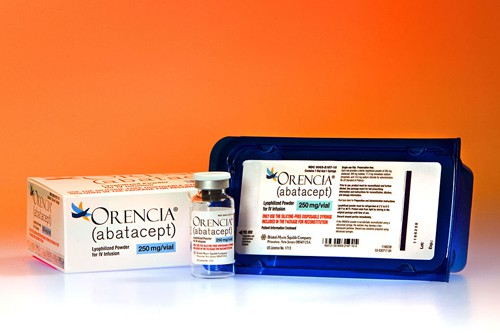
Bristol-Myers Squibb’s subcutaneous formulation of Orencia was as effective as Abbott Laboratories’ Humira in the first head-to-head trial of the two rheumatoid arthritis (RA) drugs.
In the AMPLE study, Orencia (abatacept) plus methotrexate (MTX) was equivalent to Humira and MTX in improving pain, global assessment scores and fatigue in adults with moderate-to-severe RA who had not been treated before with biologic drugs.
The data comes from a point halfway through the two-year study and was statistically powered at that point to show non-inferiority of subcutaneous Orencia to TNF blocker Humira, the market leader among biologic drugs for RA with worldwide sales of more than $4.6bn in the first nine months of 2012.
Orencia has a different mechanism of action – it is the first in a new class that binds to the CD80 receptor and blocks T cell proliferation – and sales have been ramping up since its launch in 2006, reaching $850m in the first nine months of 2012.
Its growth trajectory has been pulled back somewhat by the fact that it was available only as an intravenous infusion, until the subcutaneous version was cleared for marketing in the US last year and in Europe last month.
The new head-to-head study with Humira should help drive acceptance and take-up of the new formulation, which accounts for around 28 per cent of total Orencia sales in the US at present and is growing quickly.
The market for injectable biologic drugs for RA is however expected to be shaken up in the coming years by new orally-active entrants, such as Pfizer’s recently-approved Xeljanz (tofacitinib) which has been tipped to become a $2bn-plus product.
Humira tackles spinal arthritis
Meanwhile, Abbott has reported preliminary trial results showing that Humira is effective in the treatment of active non-radiographic axial spondyloarthritis (AS), an inflammatory disease of the spine that causes severe back pain.
Humira is already approved to treat radiographic AS, a form of the disease that can be identified using X-ray imaging. Twelve-week data from the ongoing study showed that 36 per cent of Humira-treated patients achieved a 40 per cent or greater improvement in reported symptoms, compared to 15 per cent of those on placebo.




